Boundless Resolution BassHead Experience – ThieAudio Origin IEMs
ThieAudio Origin is a $849 USD pair of IEMS or In-Ear Monitors / earphones with a beautiful space-inspired design, Four Driver Types and 8 drivers playing for each ear, and with a thick and reliable cable included in the package. Today we will review the Origin and compare it with other high-end IEMS on the market, including Campfire Moon Rover (1199 USD), Yanyin Carmen (849 USD), Sweear He-Live5 (899 USD), and Soundz Flame (990 USD).
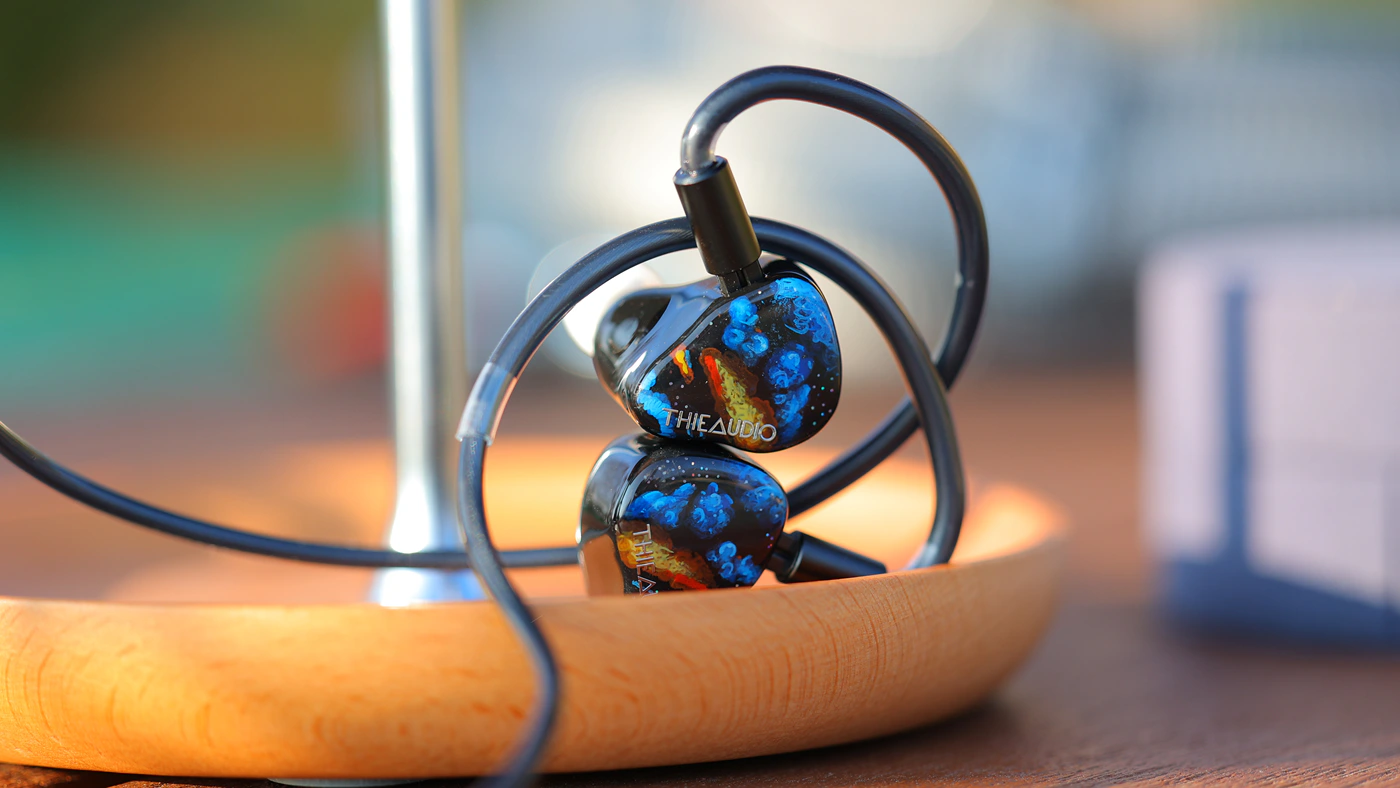
Introduction
Thieaudio is a brand mainly sold and fulfilled by Linsoul, and I’ve never seen them being sold by anyone else or individually, so I assume that it is a sub brand or at least they are strongly tied to Linsoul. There is not a lot of information available about ThieAudio as a company, but all of their products are easily made available by Linsoul, one of the best Chifi shops in the whole world, and they sell their products on their own Linsoul website, but also on Amazon and Aliexpress. If you’re looking for excellence in support and a super nice shopping experience, Linsoul is always the top company I recommend working with.
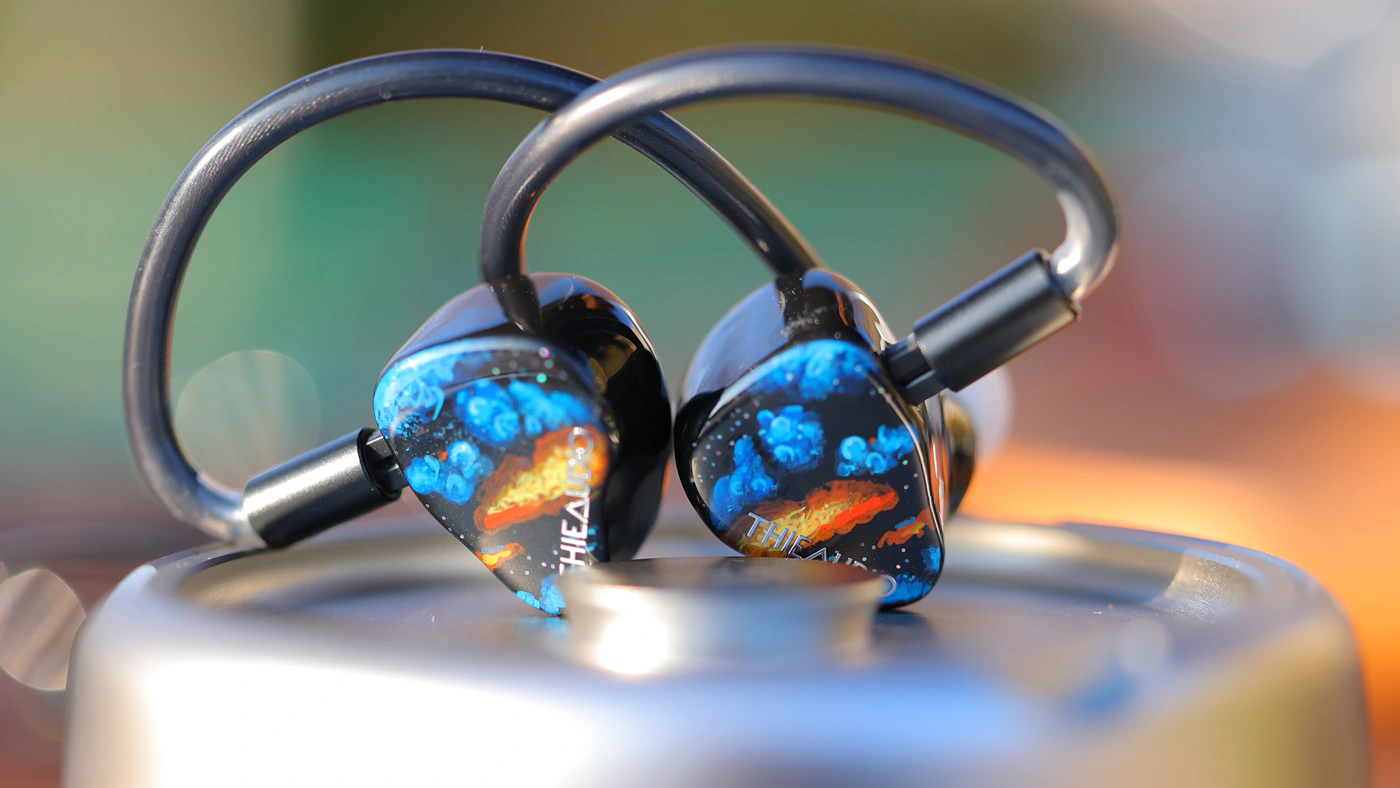
As an Amazon Influencer, I earn from qualifying purchases, and using the purchase links in my reviews helps me maintain this website and Youtube Channel. Huge thanks to Linsoul for providing us with the sample for this review.
Product Link
Amazon – https://amzn.to/4hIXut3
Aliexpress – https://s.click.aliexpress.com/e/_oEN9fA1
Build Quality / Aesthetics
ThieAudio Origin is the ultimate IEM from TieAudio from an Engineering point of view, at least right now. It is designed for the bass enthusiast, and it features a novel quadbrid configuration, with a good balance of every sonic frequency, and it includes the custom EliteNoir cable designed especially for it. We get the maximum level of engineering from ThieAudio with 4 driver types playing for each ear.

With the bass lover in mind, ThieAudio Origin offers 12 dB of sub-bass shelf cut precisely at 250 Hz. The UltraSonic / Upper treble frequencies are handled by a pair of Dual Sonion Electrostatic Super Tweeters (EST Drivers), while the midrange is reproduced by a Knowles TWFK Dual Tweeter, which has been engineered to deliver both the upper and lower treble frequencies. Two Sonion 2600 series full-range drivers have been introduced for the midrange and lower frequencies, with a special focus on the lower and upper midrange. For the best bass possible, Thieaudio has implemented an in-house developed 10mm bio-cellulose dynamic driver, whilst a new Bone Conduction driver provides additional kick and texture to the bass, and should also enhance the midrange.
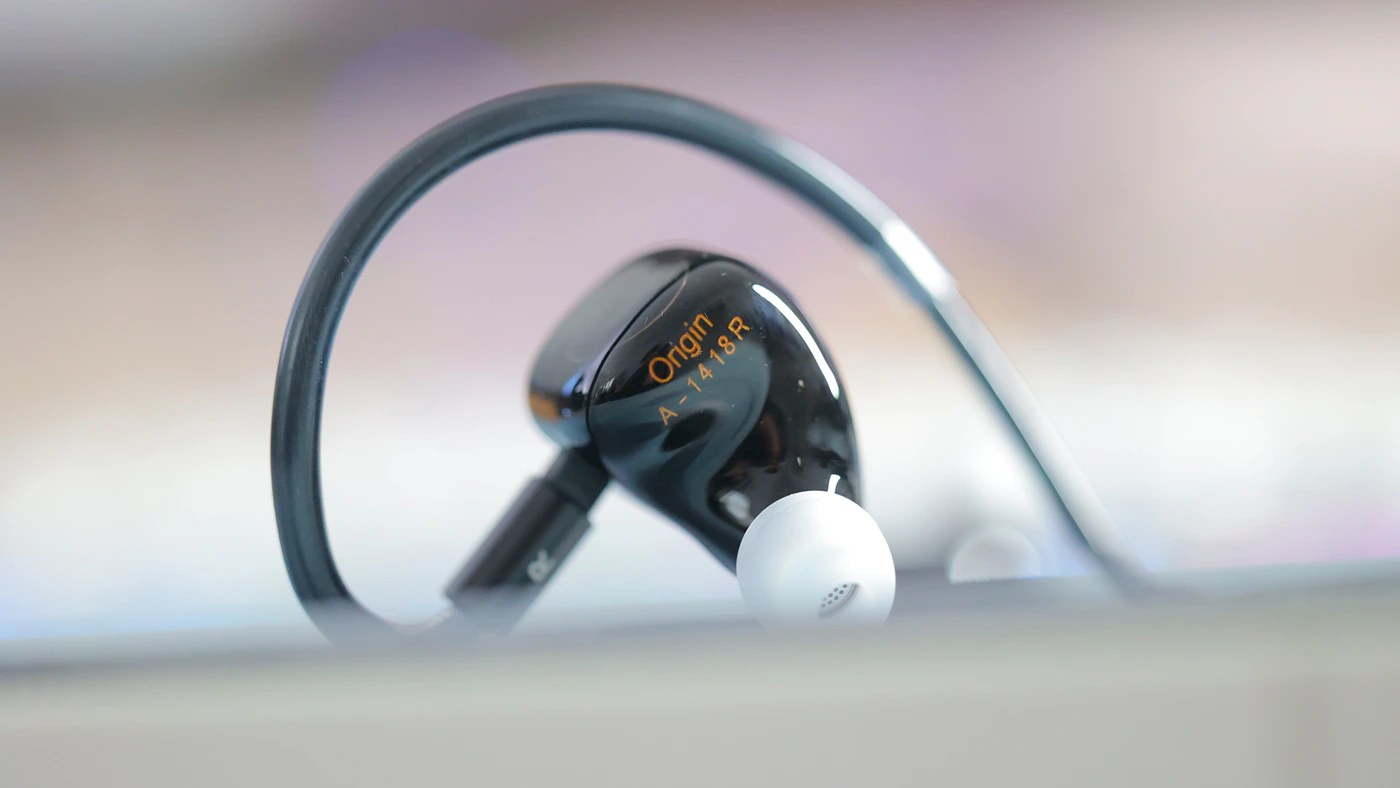
Slightly different from most bone conduction drivers around, ThieAudio designed theirs to enhance the sound signature significantly across all frequency ranges, including bass and the midrange, and to also create a wider, more realistic soundstage. Each Origin piece is crafted by a state-of-the-art resin printer, it is hand assembled and hand finished. A flagship IEM would be incomplete without a high-end cable, and Origin comes with a 2-Pin 0.78mm connector system, which allows the user to swap the cables easily if they’re looking for an upgrade. As I noted in my FiiO UTWS 5 2025 review, this also means that Origin will not work with 2-Pin cables and Bluetooth adapters that rely on a 0.75mm 2-Pin connector, as the pins are too thin.
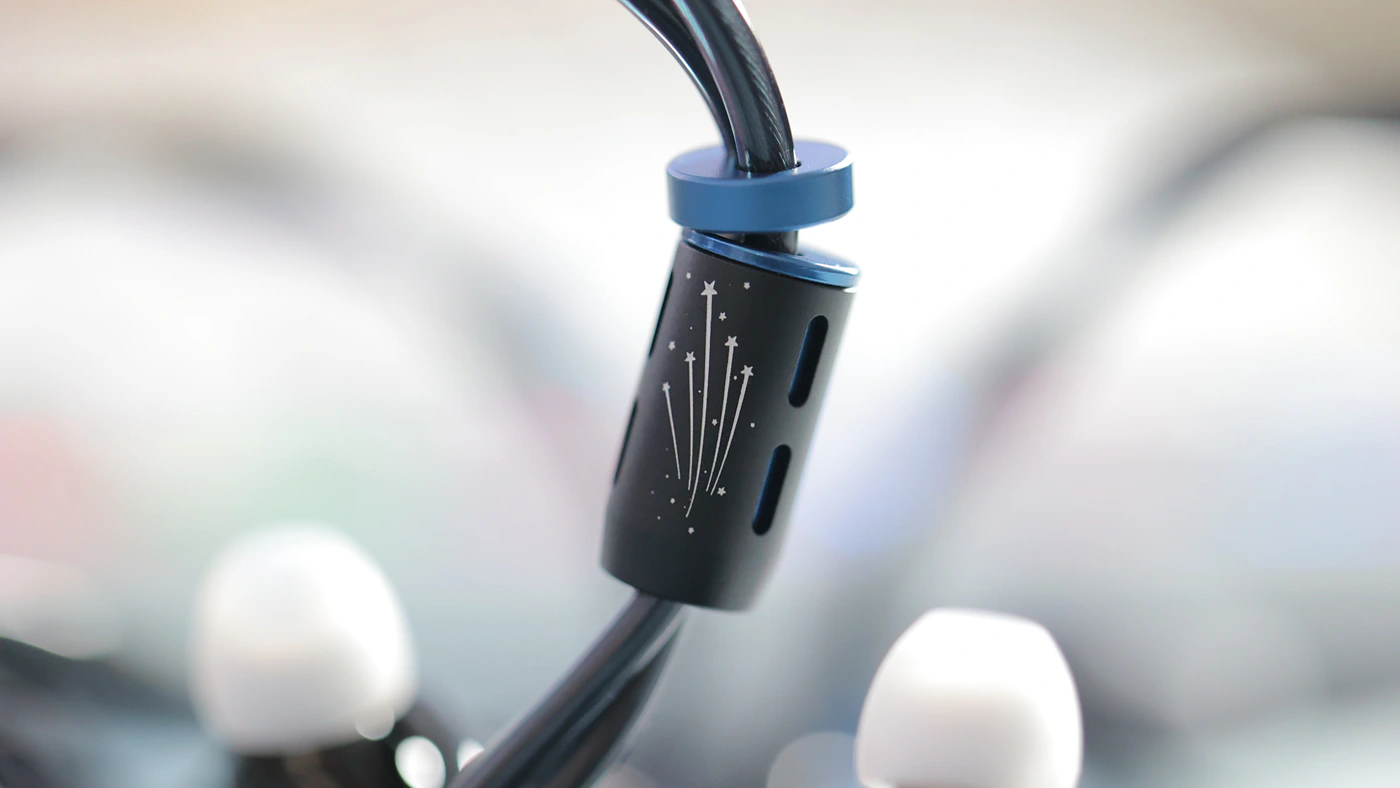
EliteNoire is a high-end cable including a 7x7x0.80mm Silver Plated Over 5N LCOFC Wire, and a 16x7x0.06mm Silver Played Over 4N LCOFC Wire, having 161 wires in total, in a 20 AWG configuration. It is a modular cable, supporting both 4.4mm balanced and 3.5mm single ended connectors, and it is one of the best cables you can find out of the factory with an IEM. This being said, this also means that this is likely the thickest and most rigid cable that you can find for an IEM, and those 20AWG are super thick.
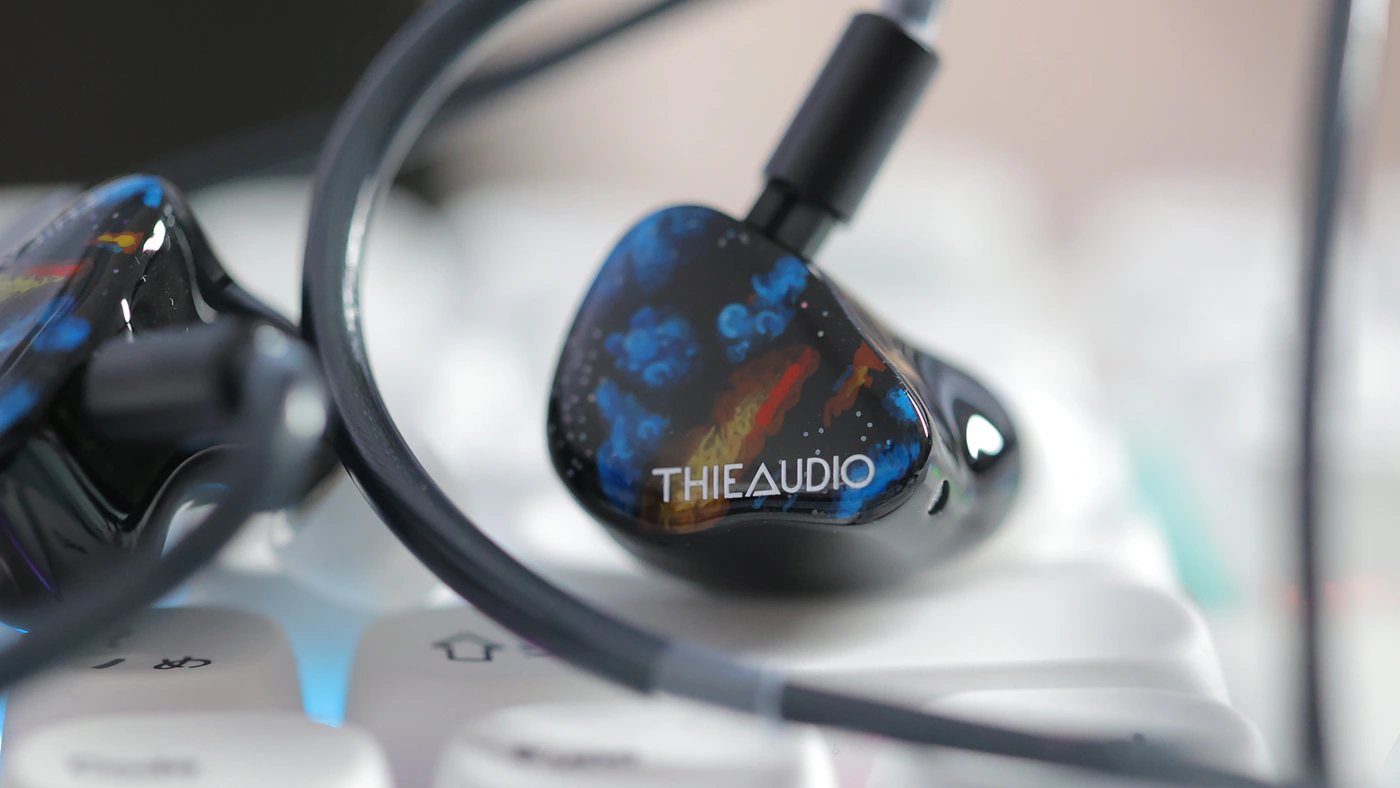
The whole package also looks nice, there’s a transport case with an alcantra soft finish included, along with multiple eartips. On the more technical side of things, Origin has an impedance of 9 OHMs and a SPL of 102 dB, but in my tests, the whole sound is very coherent and not very sensitive to source hissing. This being said, Origin is sensitive to source quality and will scale nicely with a good source.
Fit / Subjective Usage
We have to start by replacing both the default cable and the eartips included with the ThieAudio Origin. This is because the default eartips can be upgraded to ddHiFi ST-35 for a better comfort and better sound from the bone conduction driver, while the default cable is one of the thickest, most inflexible cables I’ve seen in this hobby, so I have mostly been using the Origin with ddHiFi ST-35 and ddHiFi BC130 Nyx Pro. Upgrading or replacing the cable has a mild effect on the sound quality, but it is not a huge effect, and for the most part you can consider it more of an ergonomics upgrade than a sonic one, as we already have a high-end cable included in the package. Most users will not need this much tweaking, but I just want to let you know that there’s quite a bit extra to achieve with a few changes.
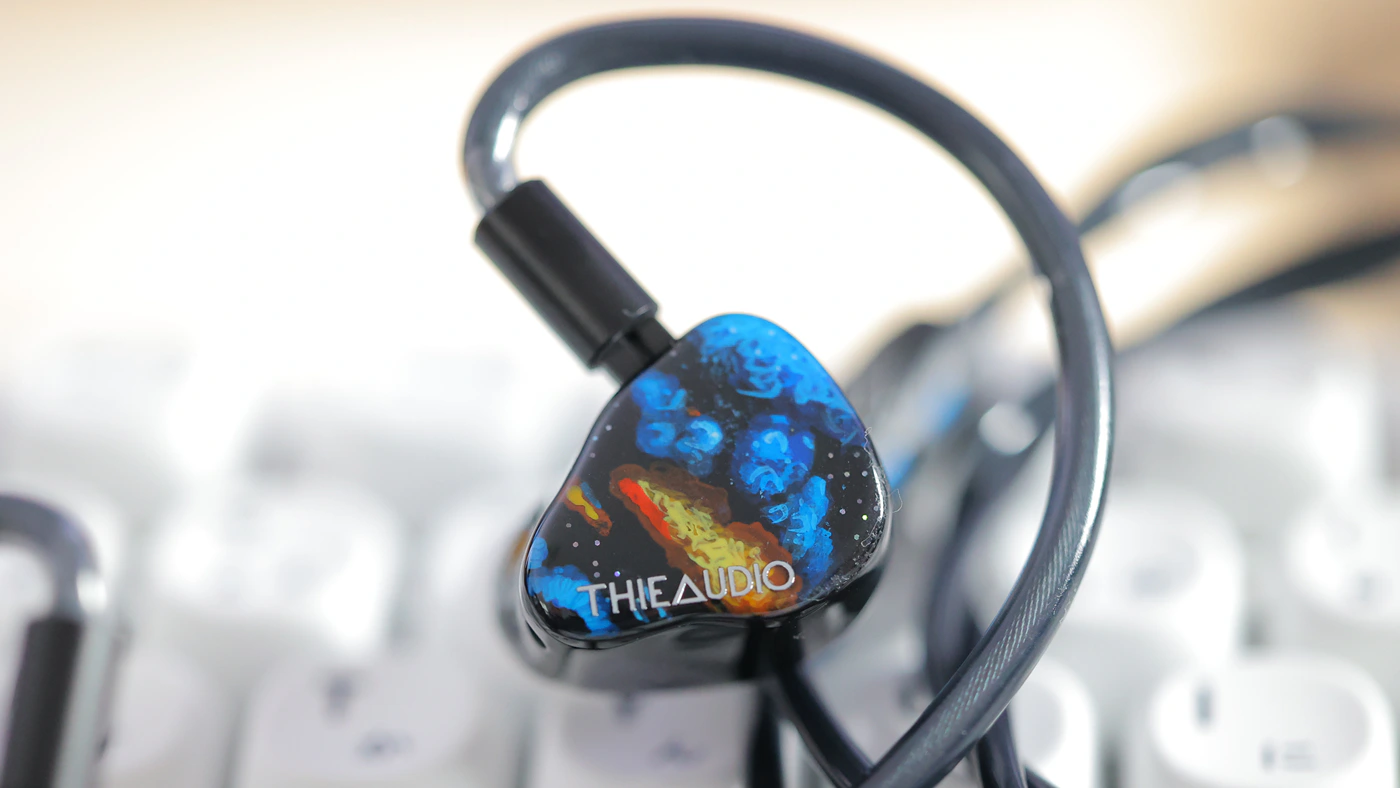
ThieAudio Origin is generally easy to drive and match, it leaks a bit of what you’re listening to, but offers between 20 and 30 dB of passive noise isolation. The comfort is incredibly good, it fills the ear with its shell, but has an ergonomic design with no sharp edges, it has a medium weight, medium depth to the fitting, basically you never feel like it falls out or like it is sticking out too much, a balance of everything. I have no driver flex, no void and no wearing issues, although the original cable can transmit microphonic noise a bit, it is also on par or sometimes even better sonically than most upgrade cables you can find below 300 USD.
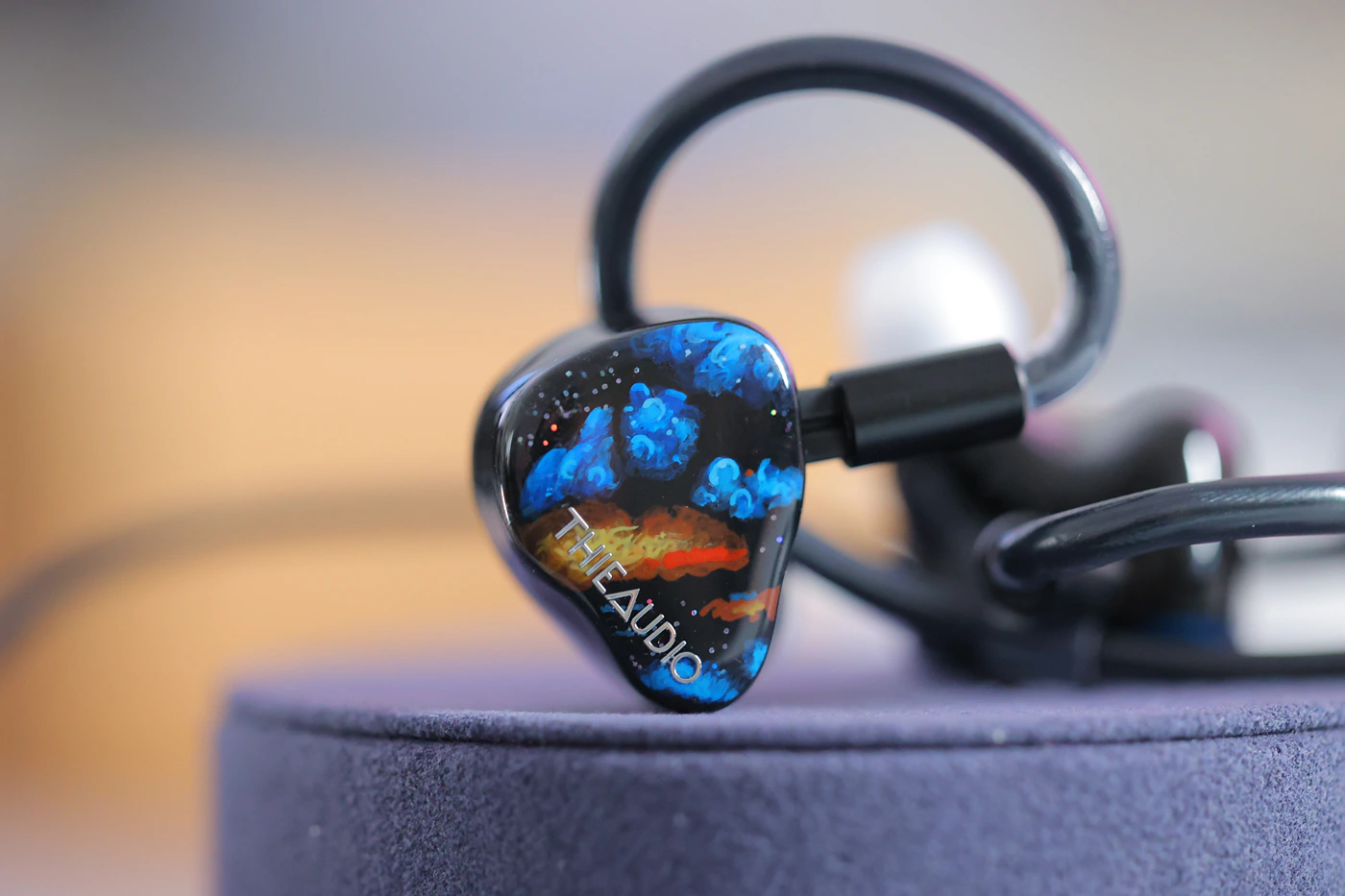
Generally speaking, ThieAudio Origin is as good as it gets for the price point, and even relative to most high-end flagship IEMs, it simply does everything it should, really well.
Sound Quality
Pairings – To test the Origin, I have paired it with a selection of sources, including Rose Technics RT-5000, Shanling EH1, Shanling EH2, Dethonray Listening M1, Dethonray Clarinet, iBasso DX340, Lotoo PAW GT2, Sparkos Gemini driven by Fosi Audio ZD3, and Singxer SA-1 V2 driven by HIFIMAN EF500. Origin is fairly easy to drive and responds really well to an increase in the source quality, but they are also sensitive to source noise. You can expect to hear zero noise with Lotoo PAW Gt2 and DX340, both being very good at driving IEMs, but you will hear a slight background noise with entry-level and noisier sources that have a high output impedance.

Overall Signature – ThieAudio Origin is one of the most complete, whole sounding IEMs in the whole world, they are ballsy, full, dynamic and engaging, bringing forward the bass, especially the sub-bass in all songs, while giving music a holographic and fun presentation. Voices are always presented sweetly, with a thick, lush undertone and Origin can never become fatiguing despite the excellent extension up to 20 kHz, and sharp treble. Basically, it blends all the advantages of a sweet and musical midrange, strong technical performance and resolution, vivid imaging, and a deep, powerful bass. Volume control is also surprisingly good, not only is the sound consistent across all volume levels, but Origin can get incredibly loud with zero distortion, being great for both quiet and loud listening.
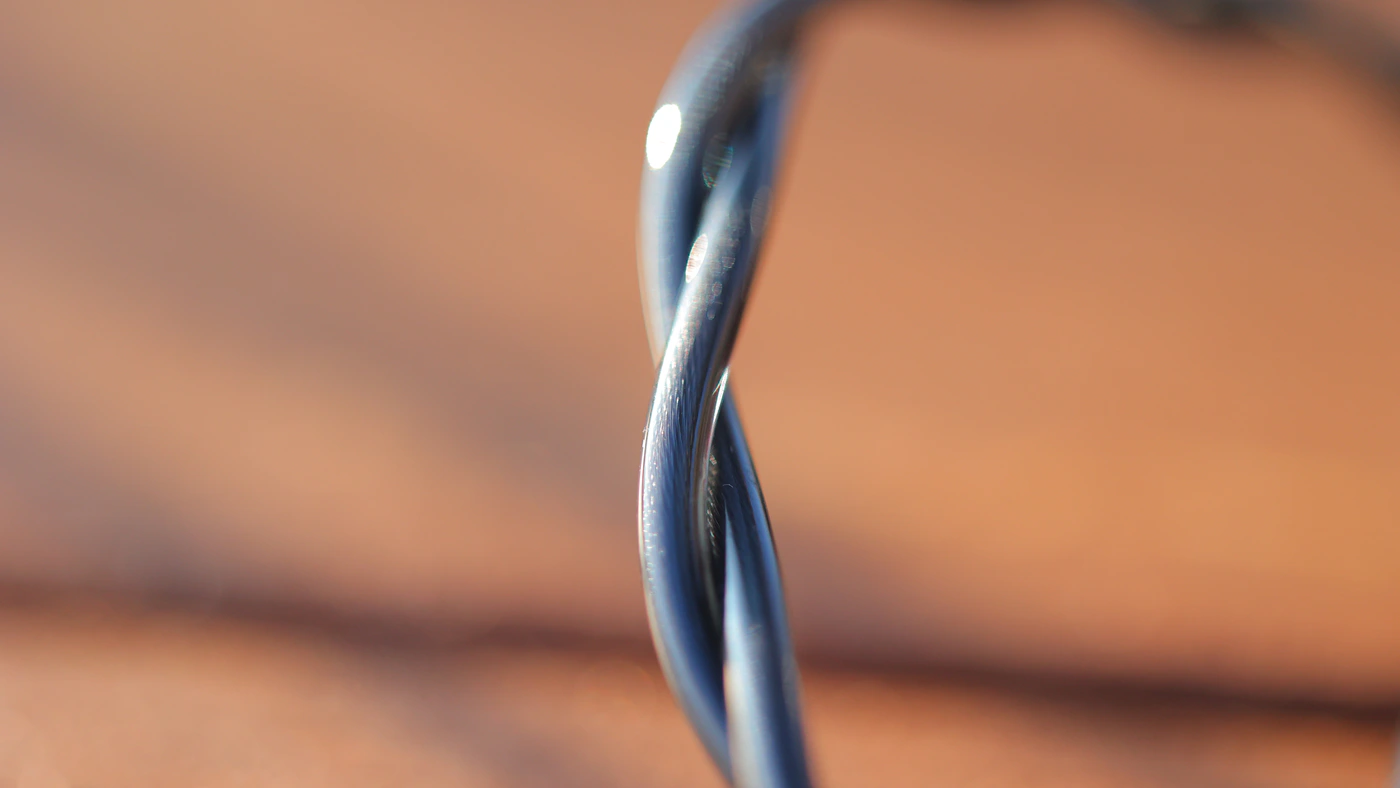
Bass – Starting from the very bottom depths of subs, Origin is an IEM that will satisfy the needs, desires and dreams of every basshead out there, having a full sub bass with over 10 dB of extra sub relative to the midrange. It basically adds and presents the sub bass in all songs, including rock, Metal, but really delivers a devastating impact and depth for EMD, Pop, and electronic music. The entire bass is a party, you hear a thick, lush and heavy presentation for all tracks, but it feels snappy and active, not a bloated or slow presentation, rather it is what a filling subwoofer from the high-end range sounds like, but put inside of an earphone. Everything about the bass is megatastic, bombastic and you literally feel like every sound just makes sense this way. Naturally, if you prefer a neutral signature, you can stop reading now. Origin is one of the bassiest basshead IEM out there, but the trick up its sleeve is how balanced the midrange and treble is relative to this bass.
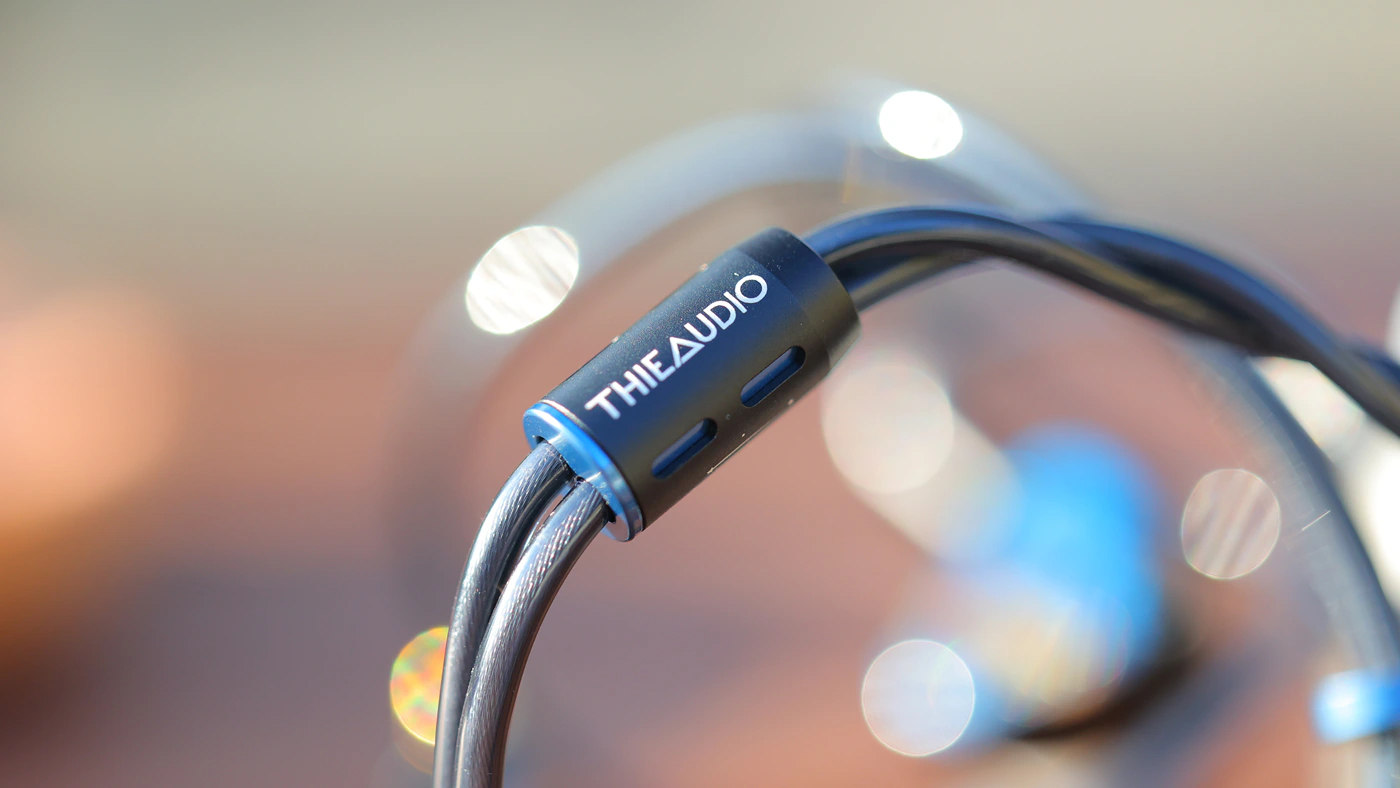
Midrange – ThieAudio generally produced some fairly colored sounding IEMs with uneven peaks and dips and they never caught my attention for a natural voicing, but Origin is here to change this, being the most natural sounding IEM the company produced so far. This means that both male and female voices sund lush, natural, full and thick. There’s a magical musicality and euphony that coats the sound of the Origin, and coats is the right word here, the entire sound is thick like honey, sweet and pleasing, there’s a complete depth to every single detail and bit of information, Origin sounds delightful despite being a non-traditional signature IEM. You can expect everything to sound quite lush, deep and thick, including male and female voices. Even guitars have a thick, lush presentation to them.

Treble – Despite everything said so far, ThieAudio implemented some capable drivers for the treble that have a different speed, and we get a sharp, smooth but extended treble that sounds really airy and punchy. Treble has a much faster speed than the bass and the midrange, which creates detail and clarity incredibly well, gives air to music, and extends the soundstage of the Origin. The treble easily reaches 20 kHz, and has a fairly consistent presentation from the upper midrange all the way to the upper treble, without a strong peak or dip, so it sounds really natural, clean and detailed without being harsh or metallic. As Origin has a low impedance, the treble extension and presentation depends a lot on the source, and a source with a high output impedance will make it really sharp and can give it a bit too much brightness.
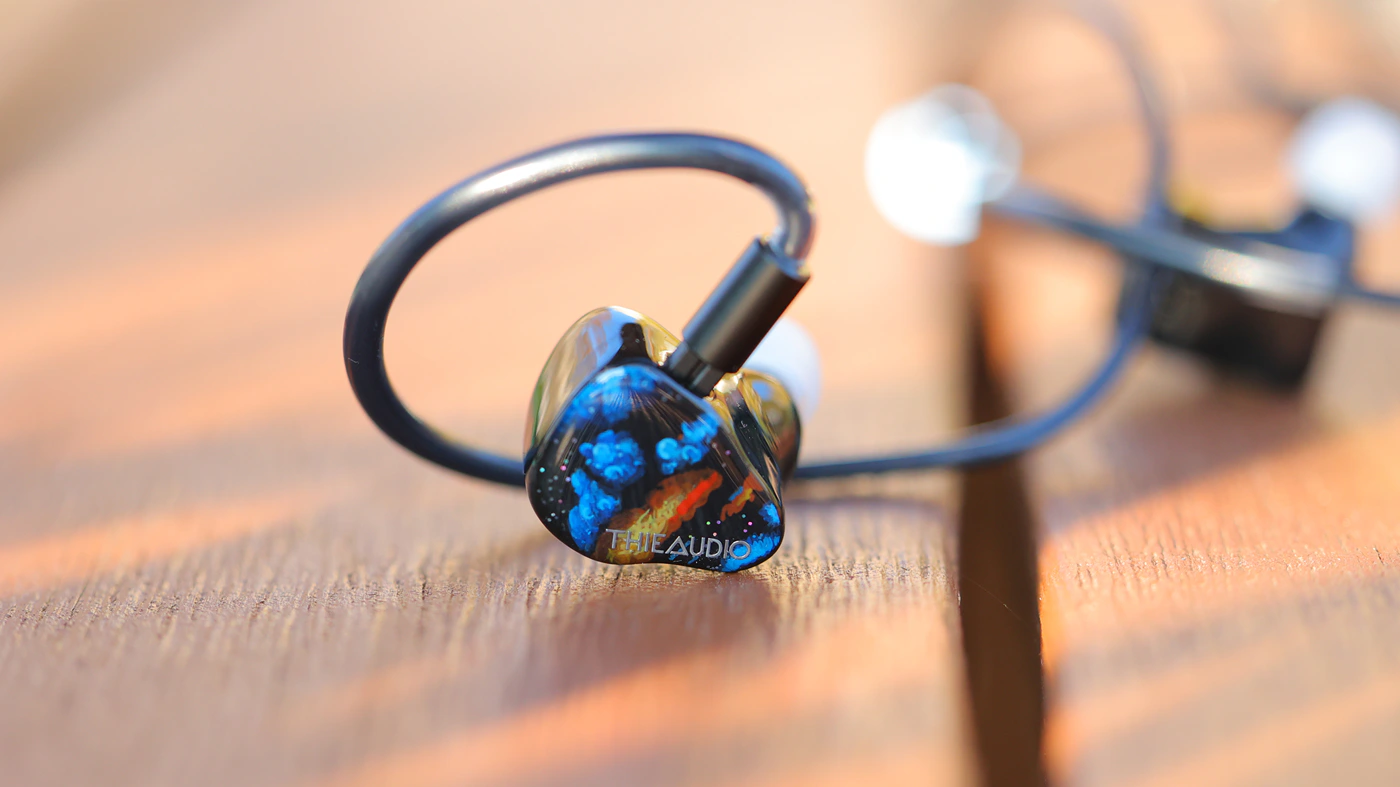
PRaT / Textures / Dynamic – ThieAudio Origin has a thick, lush texture in the bass, and about half of that is transcribed to the midrange, although the midrange has a combination of thick and quick texture, which creates a high technical performance but gives a bold outline to each instrument, creating a realistic sound, very similar to what you’d hear when a band is playing live in a small space, especially nice for rock, metal but also working really well for pop, edm and dubstep. We get a really fast treble impulse response and speed, but a natural character, smooth texture, which allows the Origin to sound really dynamic, punchy and colorful without having any kind of coloration to the sound, like peaks or dips in the frequency response.

Volume Control – We get an excellent volume control, Origin basically sounds the same regardless of the volume, and it also holds its ground really well when punished to play very loud, even above 125 dB having no audible distortion. The only thing that is variable is how it sounds across sources, as some sources will be brighter and some more natural in sound, depending on their own signature as well as output impedance, Origin having a low impedance. Generally, it is one of the IEMs I find the most reliable to push both loud and enjoy quietly, although thanks to its low distortion and high technical performance, plus smooth and non-fatiguing sound, I often push them very loud for my personal enjoyment.
Soundstage – ThieAudio Origin is a thick, lush and warm / basshead sounding IEM, but it manages to create a wide and holographic soundstage, although it won’t win an award for the staging alone. There’s a tendency for it to create a natural size for each instrument, it does not exaggerate the size, or width or depth of the soundstage, but it does most certainly fluff up the weight and body of each instrument. Separation is very good, but still within nature, and so is the imaging. Basically, it is not a surgical knife, it won’t cut instruments apart from an orchestra, it is not an analytical sounding IEM, but it creates a big soundstage that sounds just natural and clean. You feel like music is playing all around you, with no clear bounds.
Comparisons
ThieAudio Origin vs Campfire Moon Rover (849 USD vs 1199 USD) – Campfire Moon Rover costs quite a bit more than the Origin, but also has a different shape and a different tuning. Starting with the design, Moon rover has sharp edges on the inside, comes and it is designed mainly to be used with foam tips, and it also needs an urgent upgrade for both the single ended cable and the eartips. Both IEMs have a good passive noise isolation, but Origin isolates more, leaks a bit more, it is a bit easier to drive, shows hiss more, and it is more sensitive to source noise and source quality. The comfort is about equal, the metallic shell of the moon rover is nice to the touch, but all the sharp edges it has are less nice, and Origin, although a bit larger and heavier, ends up being a bit more comfortable.
Sonically, Origin is a basshead IEM through and through, it has more punch, more kick, reveals information in the low-end better, so Moon Rover comes out as sounding mid centric, sweet, and euphonic, but lacks the kind of low-end extension and quantity that Origin has. Both IEMs are great for rock, metal, EDM and Pop, but Origin can create the feeling of a club, of a dance party or live concert much better, while Moon Rover has a better vocal acuity, it sounds more natural in the midrange and pushes the midrange more to the front of the stage, creating a more engaging presentation for vocal centric music. Despite having a mid centric sound, Moon rover has a wider soundstage, although Origin has a deeper sound.
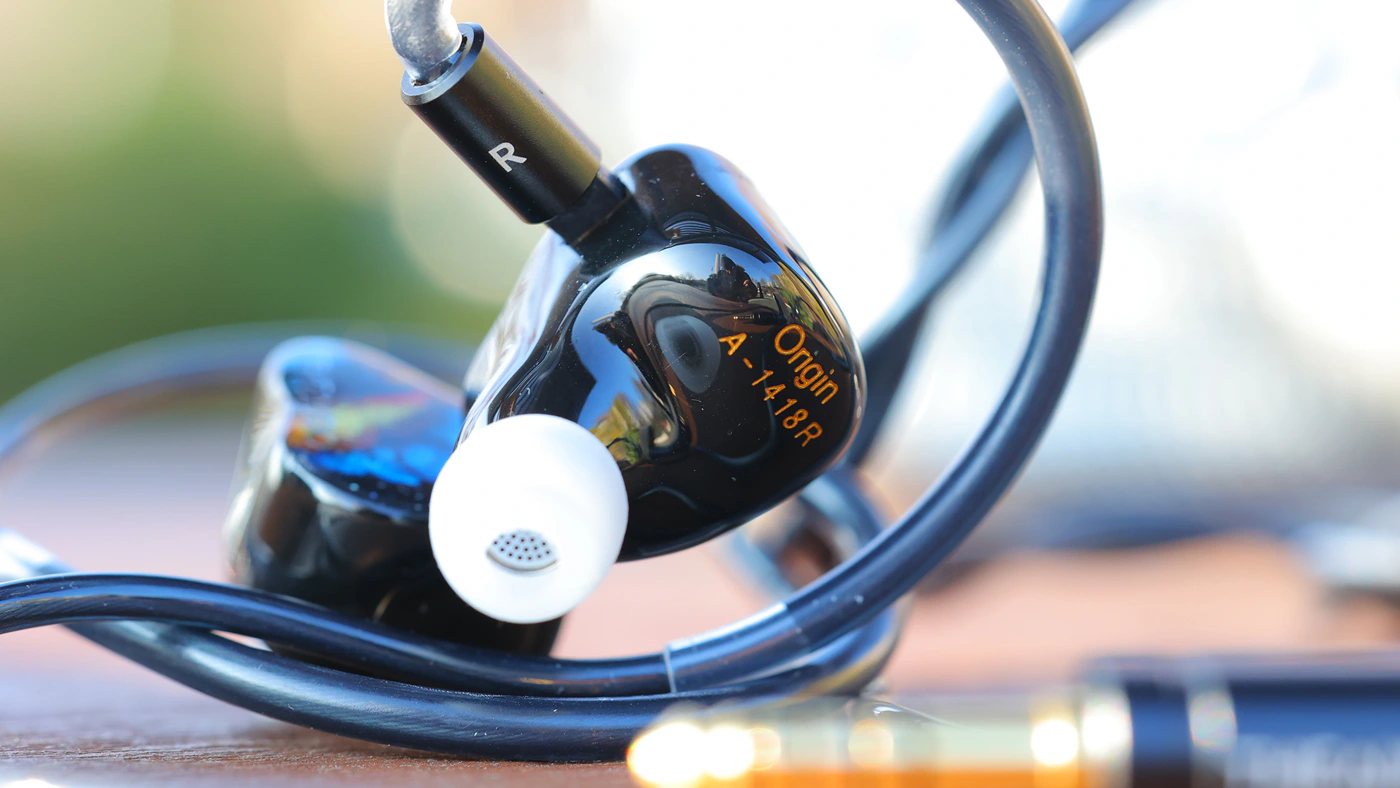
ThieAudio Origin vs YanYin Carmen (849 USD vs 849 USD) – Carmen and Origin are both IEMs sold and fulfilled by Linsoul, and they also have exactly the same price. The comfort of the two is comparable, both come with high-end cables straight from the factory, both have a beautiful design and are comfortable. Both are easy to drive, but Carmen is more sensitive to source noise and source quality, while Origin is slightly less sensitive. The fitting is very similar. If I didn’t know better, I would have assumed they were made by the same company, at least from an ergonomics / construction point of view.
Sonically, they are quite different. Despite both the Origin and Carmen being considered basshead IEMs, and both have a seriously deep and punchy bass, the midrange of the Origin is much cleaner, has a better resolution, better detail, more natural voicing and Carmen, when you make the AB switch, will sound rather veiled, thick, and too dampened in the voices. This situation is even more evident in the treble, where Origin has a very natural, clean and airy treble, lots of detail and energy, while Carmen sounds really rolled-off, smooth and lacks any kind of bite, impact or hard edges. While both IEMs would satisfy a basshead, if you want a generally natural sound with a good amount of extra bass, Origin is for you, while if you want a LOT of bass, much less midrange, and almost no treble, a smooth and full presentation with no hard edges, then Carmen is the one for you. If you enjoy a wide soundstage, Origin has a deeper and a wider soundstage than Carmen.
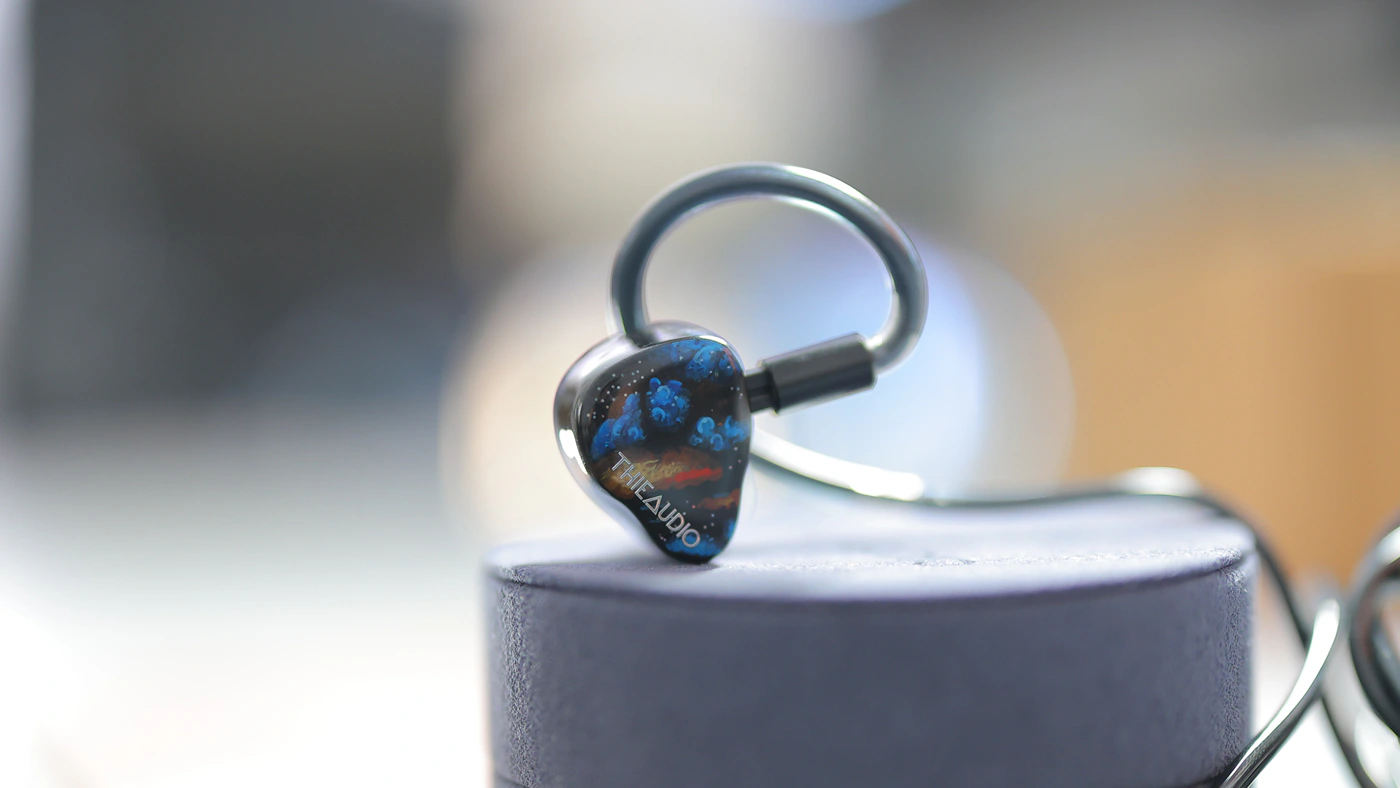
ThieAudio Origin vs Sweear He-Live5 (849 USD vs 899 USD) – We get a smaller shell and a somewhat shallow fit from He-Live5, while Origin has a larger body, and a deeper fitting. He Live 5 comes with a thinner cable, but also has a modular cable, the default eartips can be replaced for a better sound and a better comfort, and He-Live 5 comes with an intricate system to fine tune the sound of the IEMs. Overall, He-Live5 is more sensitive to source background noise, source hissing, and it is easier to drive, reaching a loud volume quite easily compared to the Origin. Both offer a similar degree of passive noise isolation.
Sonically, the two IEMs couldn’t be farther away from each other, and HE-Live 5 is an extremely analytical, detailed but bright and sharp sounding IEM with an extreme treble extension, and a neutral bass, while Origin is a full, bassy, deep sounding IEM with a natural midrange and a natural treble extension, but almost 12 dB of bass uplift above the midrange, so it has a strongly dominant low-end compared to the rest of the sound. The soundstage of the Origin is wider and deeper, while the total resolution of the HE-Live 5 is a bit higher.
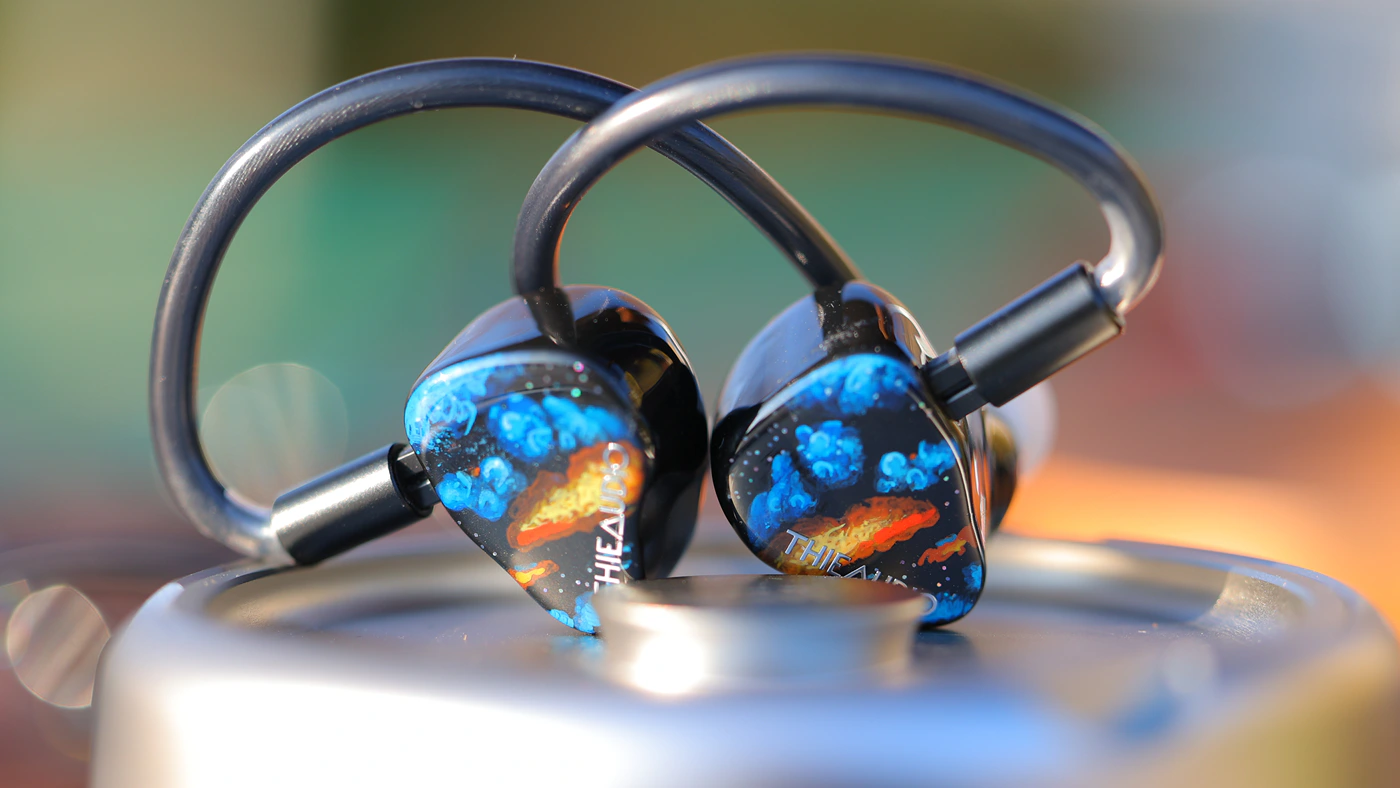
ThieAudio Origin vs Soundzs Flame (849 USD vs 990 USD) – Soundz Flame is based on a custom IEM, it comes with a much thinner and easier to hide cable, it has a deeper fitting, and it also has a lighter body, with a better overall comfort. While both IEMs are easy to drive, Flame is easier to drive and will get loud with a less powerful source, plus it is less source dependent and will sound excellent with all sources. The cable of the Origin is much thicker, fit is shallower and the overall build is a bit bulkier.
Sonically, Flame is more mid centric, sweeter and more euphonic, has a more natural bass, natural midrange and natural treble, the whole sound being more reference, neutral-natural and cleaner. Origin has a much thicker bass, sub bass, more impact, more kick, and almost 12 dB of extra bass, plus more texture, each detail is more evident due to the bone conduction driver, and the overall signature is much more lush. The soundstage of the Flame is more natural, each instrument takes a more natural bound and space, while Origin projects music farther away on the horizontal plane and it feels deeper. Generally, Flame is more natural, reference and better for music work, while Origin is far more impressionistic, more colored, colorful and bassier.
Value and Conclusion
Linsoul did it once again, but this time so much better. I don’t usually get enthusiastic about a new product, especially in the Chifi market, but Origin proved me wrong, and they have proven that a Chifi company can create a flagship pair of IEMs that have a high price / performance ratio, and be so incredibly revealing yet impactful that they became my favorite pair of IEMs since the start of this year. The package, cable and build quality, along with the sound quality all make ThieAudio Origin stand out as a high value product in today’s market.
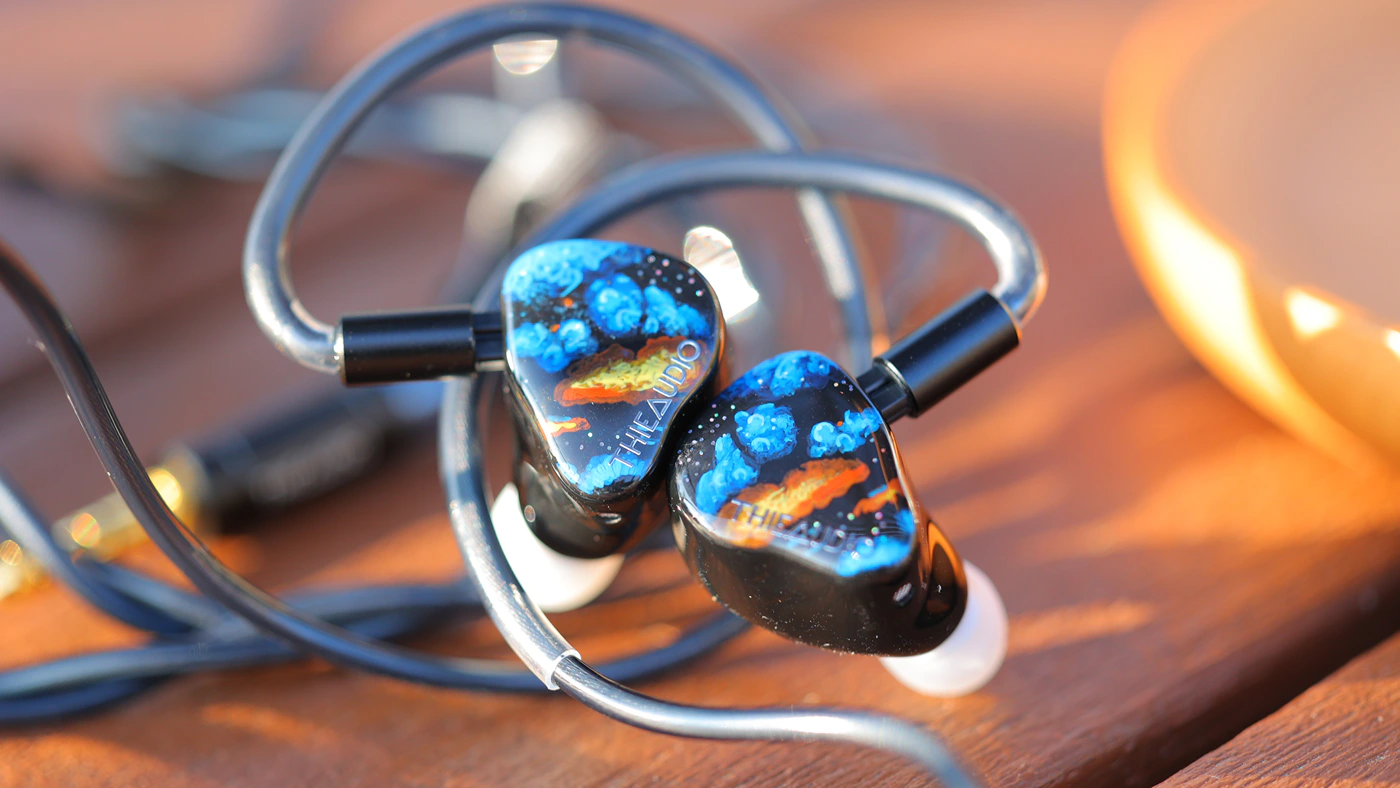
Award – I never started a review thinking I would award a product from Linsoul the Hall Of Fame award, but times have changed and by now Origin is better to my ears than most of the other flagships I’ve reviewed, so they rightfully can be considered part of our Hall Of Fame, and with the help of Linsoul I hope their sweet music will also reach your ears.
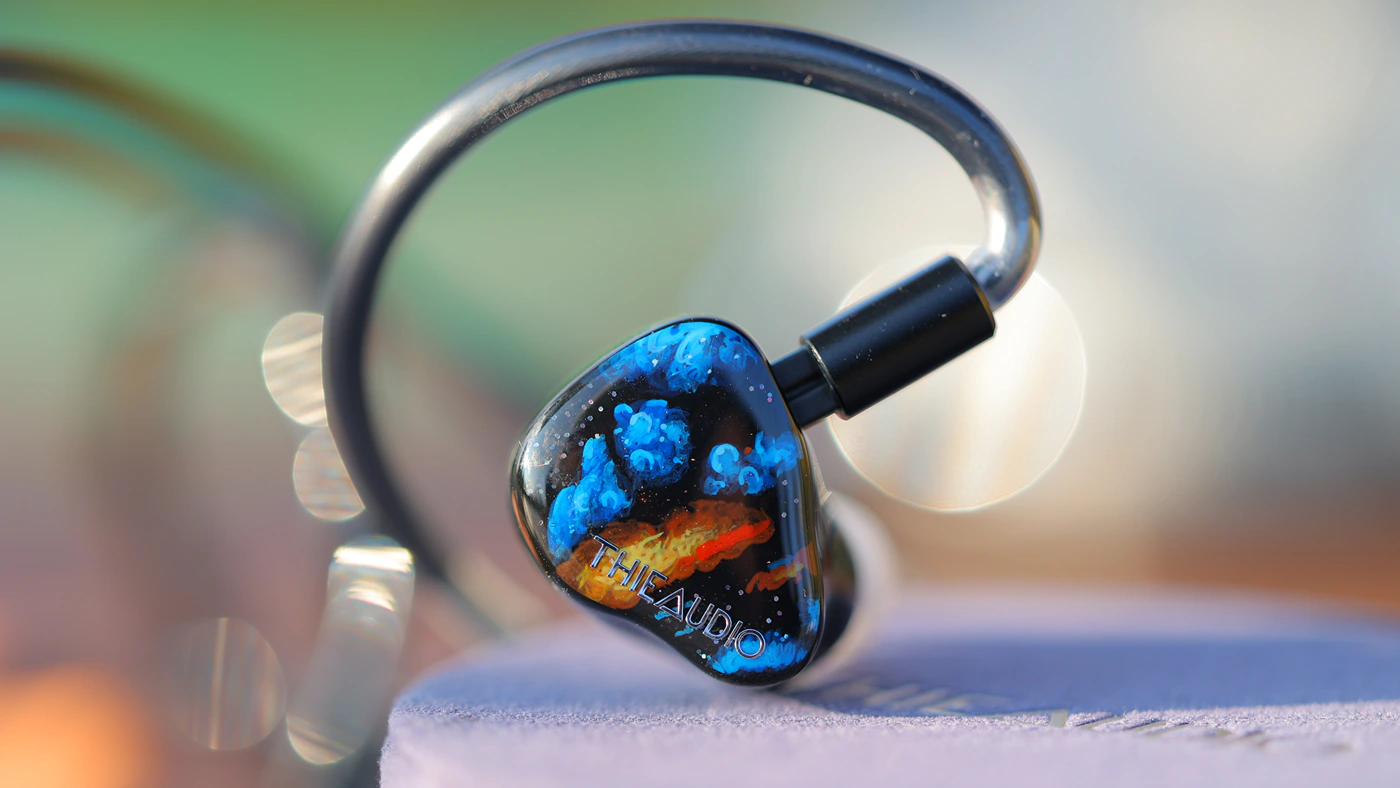
At the end of the day, ThieAudio and Linsoul have created what I consider a truly masterpiece for bassheads, as Origin has both the impact, fitting and design, but also the raw resolution, and clarity you expect from a product at this price, offering a much better IEM than you’d expect to find in the Chifi Segment, and being not just a fully recommended product, but the pair of IEMs living on my desk as my go-to favorites ever since 2025 started.
PROs
- Beautiful shells with an ergonomic design
- Excellent resolution and clarity
- Outstanding bass impact, depth and a full, satisfying presentation
- Thick and reliable high-end cable included in the package
- Neat transport case included in the package
- Advanced driver technology
- Personal favorite IEMs that I enjoy on a daily basis
- Very natural sounding midrange with no particular coloration
Cons
- Much pricier than most IEMs in the Chifi market
- If you don’t want the kind of bass Origin can offer, they won’t be for you
- Original eartips are due for a replacement
Product Link
Amazon – https://amzn.to/4hIXut3
Aliexpress – https://s.click.aliexpress.com/e/_oEN9fA1
--- Please remember to stay safe, and always have fun while listening to music!---
- If you have a dime to spare, please donate, and help us! It would make the day brighter for me and my wife-
Full Playlist used for this review
We listened to more songs than those named in this playlist, but those are excellent for identifying a sonic signature. I recommend trying most of the songs from this playlist, especially if you’re searching for new music! The playlists are different for Spotify, Tidal and Youtube, and based on the songs I enjoy and are available on each!
https://www.youtube.com/playlist?list=PL_cjBXGmwSHSdGcwuc_bKbBDGHL4QvYBu
https://open.spotify.com/playlist/5J3oloz8Riy9LxEGenOjQ0?si=979ba4f082414be7
https://tidal.com/browse/playlist/330fd544-8e5b-4839-bd35-676b2edbb3d5
--- Contact Us ---





